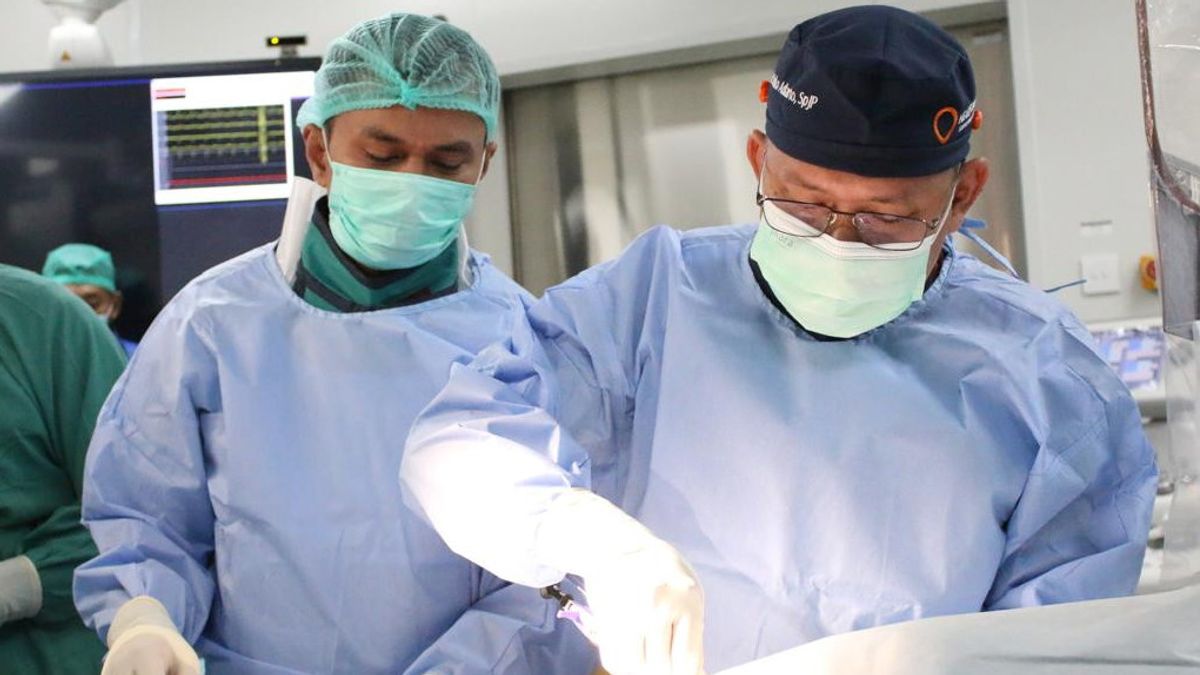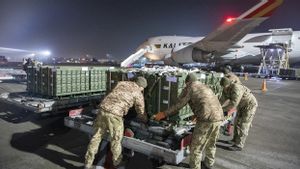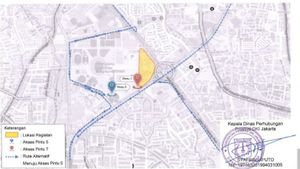JAKARTA - As the main and largest blood vessels of the blood circulation system, aorta has a very important function in flowing oxygen-rich blood from the heart throughout the body through its branches.
Because of this vital role, the presence of disturbances in the aorta can destroy the body to the point of death. One of the diseases in blood vessels that need to be watched out for is the aorta aneurism, namely abnormal widening of the walls of the aorta.
The risk of this disease can occur because the enlargement of the aorta can break at any time. This can lead to massive bleeding and Shock. Unfortunately, this aorta enlargement can occur without any symptoms at all.
Cardiovascular Intervention Consultant at Heartology Hospital, Dr. Suko Adiarto Sp.JP(K), PhD, said aorta magnification mostly occurs in the stomach, and chest.
"When the thick walls in the aorta are no longer able to maintain the shape of the aorta, the aorta will gradually weaken and cannot withstand the blood pressure inside. As a result, the aorta walls can burst to cause bleeding which leads to critical conditions to death," he said, quoted Friday, May 3.
This aneurism condition generally develops slowly and can occur over the years. If the aorta aneurism is still small and does not cause symptoms, then what can be done is routine examinations through ultrasonicography and administration of drugs to control blood pressure and heart rate.
However, when the size of the aneurism is relatively large and not handled, some complications may arise such as the aorta dissection, namely tearing off the walls of the aorta blood vessels.
Dr. Suko explained various symptoms that need to be watched out for when a disease appears, including chest pain, back pain and shortness of breath. In order to return the function of aorta to normally drain blood throughout the body and reduce the risk of rupture of aorta blood vessels, there is a minimum invasive medical procedure capable of placing the device through a small hole at the base of the thigh known as TEVAR (Thoracic Endovascular Aortic Repair) carried out on the chest cavity and EVAR (Endovascular Aneurysm Repair) by the stomach.
EVAR and TEVAR methods are often carried out as a minimal-invasive measure so that patients do not require surgery (open heart), but are carried out in a sufficient intervention by installing stent graphs into aorta blood vessels.
另请阅读:
The use of the latest medical technology is very important to provide maximum invasive treatment for all heart and blood vessels, including EVAR and TEVAR actions. This device is made of layered metal nets that will be fully exposed under X-ray. Later, the device will be able to strengthen the aorta to remain open and repair the walls of blood vessels that make up the bags of the aneurism," explained Dr. Suko.
Both procedures have advantages over open heart actions, such as faster recovery times, lower risk of complications, and less invasive procedures.
Although one of the triggering factors is genetic factors, there are several ways that can be done to reduce the risk of this disease emerging, such as exercising regularly, keeping blood pressure normal, consumption of low-fat and cholesterol healthy foods, stop smoking habits, and also keep weight ideal.
The English, Chinese, Japanese, Arabic, and French versions are automatically generated by the AI. So there may still be inaccuracies in translating, please always see Indonesian as our main language. (system supported by DigitalSiber.id)
















